Trees are a valuable asset in any community or shared property. They provide shade, improve air quality, enhance aesthetics, and increase property values. However, maintaining trees—especially large, mature, or shared trees—can be expensive. When trees are located along property lines or in shared spaces, sharing maintenance costs fairly becomes essential to prevent disputes and ensure the trees remain healthy.
This article explores strategies, practical tips, and legal considerations for fairly distributing tree maintenance costs among multiple property owners while promoting healthy tree management.
Understanding Tree Maintenance
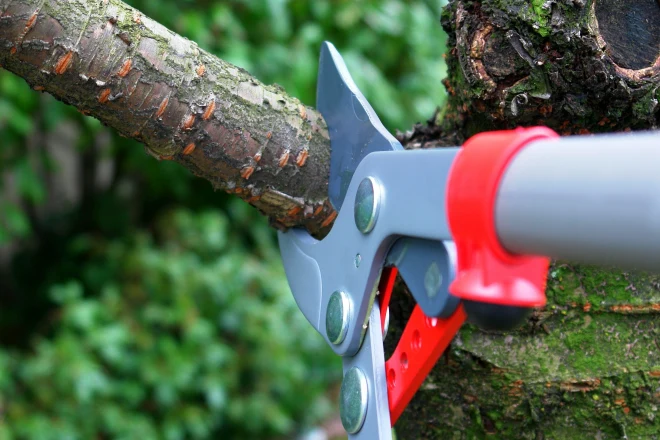
Tree maintenance includes a variety of tasks necessary to keep trees healthy, safe, and attractive:
- Pruning: Removing dead, diseased, or overgrown branches to maintain tree health and prevent hazards.
- Fertilization: Providing nutrients to support growth and prevent deficiencies.
- Pest and Disease Management: Monitoring and treating infestations or infections.
- Tree Removal or Replacement: Sometimes necessary for safety, disease, or space management.
- Cabling and Bracing: Supporting weak branches or trunks in large trees.
Costs vary depending on tree size, species, age, location, and the type of maintenance required. For shared trees, negotiating cost-sharing agreements ensures fairness and prevents conflict.
Step 1: Determine Tree Ownership and Responsibility
The first step in sharing costs fairly is to identify ownership and responsibility:
- Property Line Trees: Trees growing along property boundaries may belong to one owner or be considered joint property.
- Shared Trees: Both neighbors benefit from shared trees; therefore, maintenance costs should typically be shared.
- Legal Agreements: Review local laws, HOA rules, or property deeds for guidance on tree ownership and maintenance obligations.
Tip: Clear ownership determination avoids disputes and sets the foundation for fair cost-sharing.
Step 2: Open Communication Between Parties
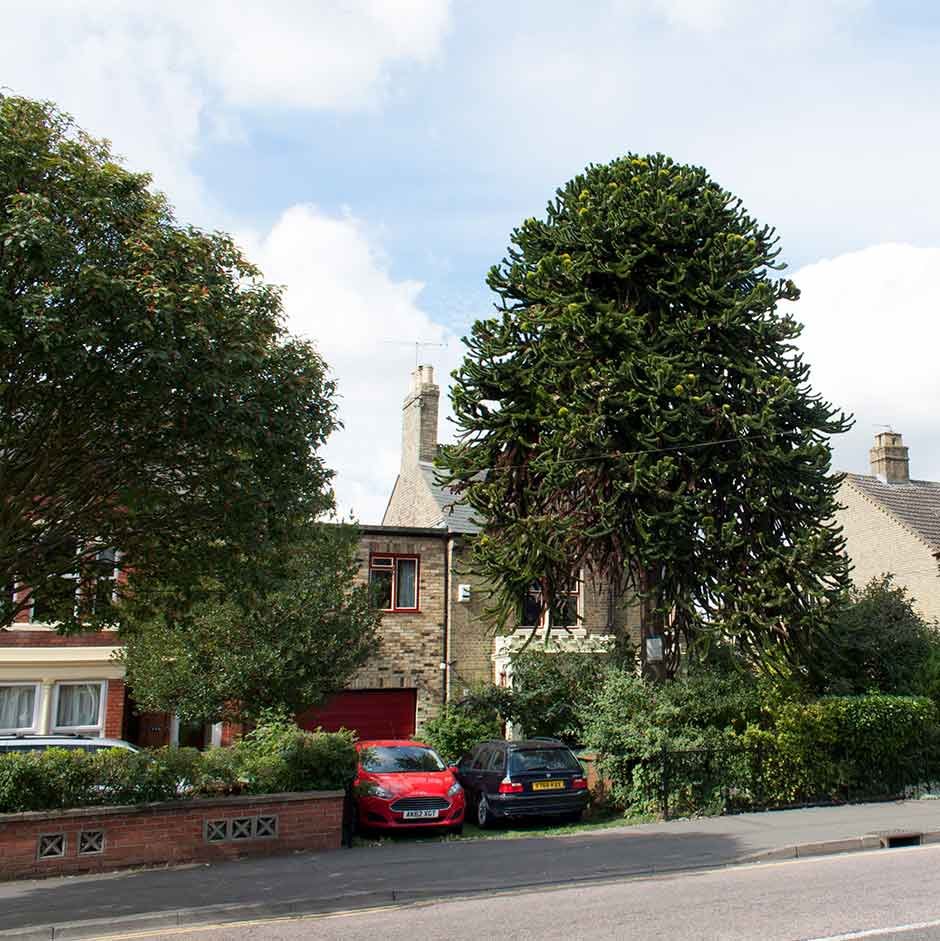
Transparent communication is essential:
- Discuss Needs Early: Before maintenance is required, discuss the health, risks, and care requirements of the tree.
- Set Expectations: Decide who is responsible for arranging and paying for routine and emergency maintenance.
- Share Estimates: Obtain quotes from certified arborists and discuss the most cost-effective approach.
- Document Agreements: Put agreements in writing, including responsibilities, frequency of maintenance, and cost-sharing percentages.
Tip: Written agreements prevent misunderstandings and provide a reference for future maintenance.
Step 3: Calculate Fair Cost Sharing
Cost-sharing depends on usage, benefit, and access:
- Equal Share: Split costs 50/50 if both parties benefit equally from the tree.
- Proportional Share: Divide costs based on factors like proximity, view benefit, shade coverage, or yard usage.
- Usage Agreement: If one party uses the tree more (e.g., for shade, fruit harvesting), they may cover a larger percentage of costs.
Example:
- Two neighbors share a large maple tree. The tree provides shade primarily to Neighbor A’s yard. A proportional approach may assign 60% of costs to Neighbor A and 40% to Neighbor B.
Tip: Consult a certified arborist to estimate accurate maintenance costs before splitting.
Step 4: Hire a Certified Arborist
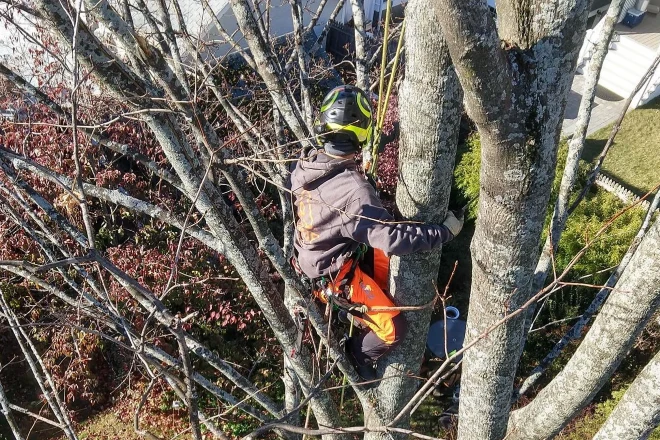
Using a professional arborist ensures safe and effective tree care:
- Provides expert assessment of tree health and risks.
- Gives detailed maintenance recommendations and cost estimates.
- Ensures pruning, fertilization, or cabling follows best practices and local regulations.
Tip: Request multiple quotes and compare services to ensure fair pricing. A certified arborist also protects all parties from liability during maintenance work.
Step 5: Set Up a Tree Maintenance Fund
Establishing a shared tree maintenance fund helps prevent disputes over future costs:
- Estimate Annual Costs: Calculate average yearly costs for pruning, fertilization, pest control, and insurance.
- Contribute Proportionally: Each party deposits their share based on agreed percentages.
- Use Fund for Maintenance: Pay arborists, purchase supplies, or cover emergency tree care.
- Review Regularly: Adjust contributions as tree needs change.
Tip: A tree maintenance fund creates transparency and encourages proactive care.
Step 6: Legal and Liability Considerations
Shared trees can lead to legal issues if not managed properly:
- Property Damage: Overhanging branches or falling limbs may damage structures or vehicles.
- Injury Liability: Owners may be liable for injuries caused by unsafe trees.
- Dispute Resolution: Written agreements, HOA rules, or mediation help prevent conflicts.
- Local Ordinances: Check city or county regulations regarding shared trees, pruning, and removal rights.
Tip: Legal advice may be necessary for large trees or complex shared arrangements to ensure fair responsibility and liability coverage.
Step 7: Preventive Care to Reduce Costs
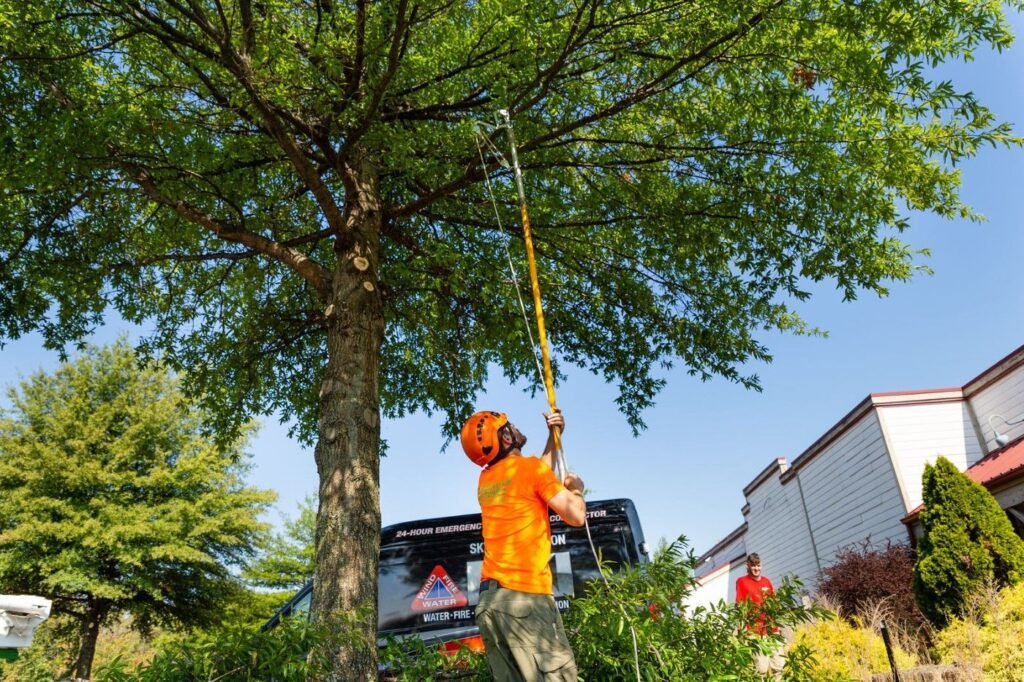
Proactive tree care reduces long-term expenses:
- Regular Pruning: Prevents hazardous branches and reduces emergency costs.
- Soil Management: Fertilization and mulch maintain tree health.
- Pest and Disease Monitoring: Early detection prevents costly treatments.
- Water Management: Ensure proper irrigation to reduce stress on the tree.
Tip: Scheduled preventive care is often more cost-effective than emergency tree removal or extensive pruning.
Step 8: Resolving Conflicts
Even with agreements, disputes may arise:
- Mediation: Use neutral third-party mediators to reach compromise.
- Professional Assessment: An arborist’s recommendation can help settle disagreements about necessary care or cost allocation.
- Documentation: Keep records of maintenance, invoices, and communications to support fairness.
- Flexibility: Be willing to adjust cost-sharing as circumstances change.
Tip: Maintain a collaborative mindset; trees are long-term assets that benefit all involved parties.
Environmental and Practical Benefits
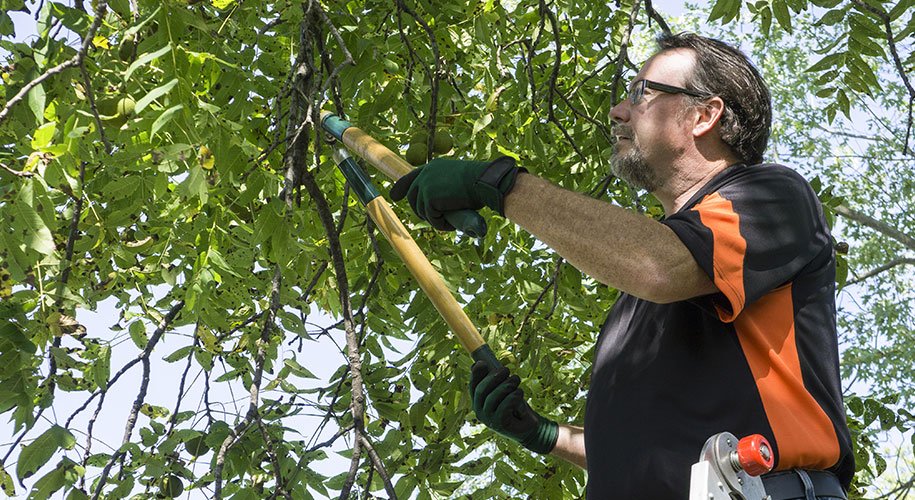
Fair tree maintenance not only prevents disputes but also provides numerous practical and environmental advantages:
- Enhanced Property Value: Healthy trees increase curb appeal and property valuation.
- Safety: Properly maintained trees reduce risk of falling limbs and structural damage.
- Wildlife Habitat: Mature trees support birds, pollinators, and local ecosystems.
- Energy Savings: Trees provide shade, reduce heat, and help lower energy costs.
By sharing costs fairly and maintaining trees responsibly, property owners contribute to long-term sustainability, safety, and aesthetics.
Final Thoughts
Sharing tree maintenance costs fairly requires communication, transparency, and planning. By understanding tree ownership, discussing responsibilities openly, calculating proportional costs, and hiring certified arborists, neighbors and property owners can ensure trees remain healthy, safe, and beautiful.
Establishing written agreements, maintenance funds, and preventive care schedules minimizes disputes and encourages cooperation. Properly managed, shared trees are long-term investments that provide shade, privacy, beauty, and environmental benefits for years to come.
Through collaboration, fairness, and proactive care, homeowners can enjoy the many advantages of trees without conflict, ensuring that these natural assets continue to enhance both the landscape and relationships between neighbors.
